|
|
|
Книги издательства «Fuel Publishing»

|
The second volume of the Russian Criminal Tattoo Encyclopaedia contains completely new drawings, text and photographs from Danzig Baldaev and Sergei Vasiliev. During his fifty years working as a prison guard in St Petersburgs notorious Kresty Prison, Baldaev diligently recorded over 3,000 criminal tattoos, documenting their meanings within this closed society. This volume further explores the extremes of this incredible collection. Published 3rd July 2006, reprinted in 2011. |

|
This beautifully produced boxed set of 53 postcards contains stunning images from the best-selling Russian Criminal Tattoo Encyclopaedia series of books. These hugely popular and influential books document the Russian criminal tattoo, revealing their hidden meanings. The motifs depicted represent the uncensored lives of the criminal classes; their tattoos were a secret tribal language, a method of showing status within the prison system. By turn they are extraordinary, artful, explicit or just strange, reflecting the lives and traditions of this previously hidden world. The box features 25 original sheet drawings by Danzig Baldaev and 25 photographs by Sergei Vasiliev. Each has a detailed description of the meaning of each tattoo on the reverse. Also included is a postcard of each of the three book covers. The drawings printed on the postcards are facsimiles of Baldaevs original sheets, reproduced directly from the Russian Criminal Tattoo Archive. |

|
Soviets features unpublished drawings from the archive of Danzig Baldaev. Made in secret, they satirize the Communist Party system and expose the absurdities of Soviet life. Baldaev touches on a wide range of subjects, from drinking (Alcoholics and Shirkers) to the Afghan war (The Shady Enterprise), via dissent (Censorship, Paranoia and Suspicion) and religion (Atheism as an Ideology). He reveals the cracks in the crumbling socialist structure, describing the realities of living in a country whose leaders are in pursuit of an ideal that will never arrive. The drawings date from the 1950s to the period immediately before the fall of the Soviet Union in 1991, with caricatures exposing communism's winners and losers: the stagnation of the system, the corruption of its politicians and the effect of this on the ordinary soviet citizen. Baldaev's drawings are contrasted with classic propaganda-style photographs taken by Sergei Vasiliev for the newspaper Vercherny Chelyabinsk. These photographs depict the world the Communist leaders dreamed of: where the local factory produced its millionth tractor and heroic workers fulfilled their five-year plans. It is impossible to imagine the daily reality of living under such a system; this book shows us — both broadly and in minute detail — what it must have been like. |

|
Occasionally a book is published that reveals a subculture you never dreamt existed. More rarely, that book goes on to become a phenomenon of its own. The 2004 publication of the Russian Criminal Tattoo Encyclopaedia was such a phenomenon, spawning two further volumes and alerting a fascinated readership worldwide to the extraordinary and hermetic world of Russian criminal tattoos (David Cronenberg, for example, made regular use of the Encyclopaedia during the making of his 2007 movie Eastern Promises). Now, Fuel has reprinted volume one of this bestselling series, whose first edition already fetches considerable sums online. The photographs, drawings and texts published in this book are part of a collection of more than 3,000 tattoos accumulated over a lifetime by a prison attendant named Danzig Baldaev. Tattoos were his gateway into a secret world in which he acted as ethnographer, recording the rituals of a closed society. The icons and tribal languages he documented are artful, distasteful, sexually explicit and sometimes just strange, reflecting as they do the lives and traditions of Russian convicts. Skulls, swastikas, harems of naked women, a smiling Al Capone, medieval knights in armor, daggers sheathed in blood, benign images of Christ, sweet-faced mothers and their babies, armies of tanks and a horned Lenin: these are the signs by which the people of this hidden world mark and identify themselves. With a foreword by Danzig Baldaev, and an introduction by Alexei Plutser-Sarno, exploring the symbolism of the Russian criminal tattoo. |

|
This book is dedicated to the Soviet Space Dogs, who played a crucial part in the Soviet Space programme. These homeless dogs, plucked from the streets of Moscow, were selected because they fitted the programmes criteria: female, weighing no more than 7kg, measuring no more than 35cm in length, robust, photogenic and with a calm temperament. These characteristics enabled the dogs to withstand the extensive training that was needed to prepare them for suborbital, then for orbital space fights. On 3 November 1957, the dog Laika was the first Earth-born creature to enter space, making her instantly famous around the world. She did not return. Her death, a few hours after launching, transformed her into a legendary symbol of sacrifice. Two further strays, Belka and Strelka, were the first beings to make it back from space, and were swiftly immortalized in childrens books and cartoons. Images of the Space Dogs proliferated, reproduced on everyday goods across the Soviet Union: cigarette packets, tins of sweets, badges, stamps and postcards all bore their likeness. This book uses these unique items to illustrate the story (in fact and fiction) of how they became fairy-tale heroines. Monuments now commemorate their pioneering role in conquering the final frontier: their heroism will never be forgotten. |

|
The world of Russian public notices is fascinating, bizarre and saturated in tragic-comedy: An old woman. Left home and has not returned. Small, hunchbacked.Wears: a blue dress, red wool cardigan, a white handkerchief with red flowers on her head, grey slippers on her feet. Does not have memory. The authors and readers of these usually handwritten notices are members of Russia's underclass, made visible by these acts of public address which so often go unread. In this secret economy of exchange and communication, you can swap a voucher for an airplane or help to find a missing earring lost during the fireworks on the Day of Cosmonauts. All over Russia, all sorts of surfaces, stationary or mobile, have been papered over with such notices. |
|